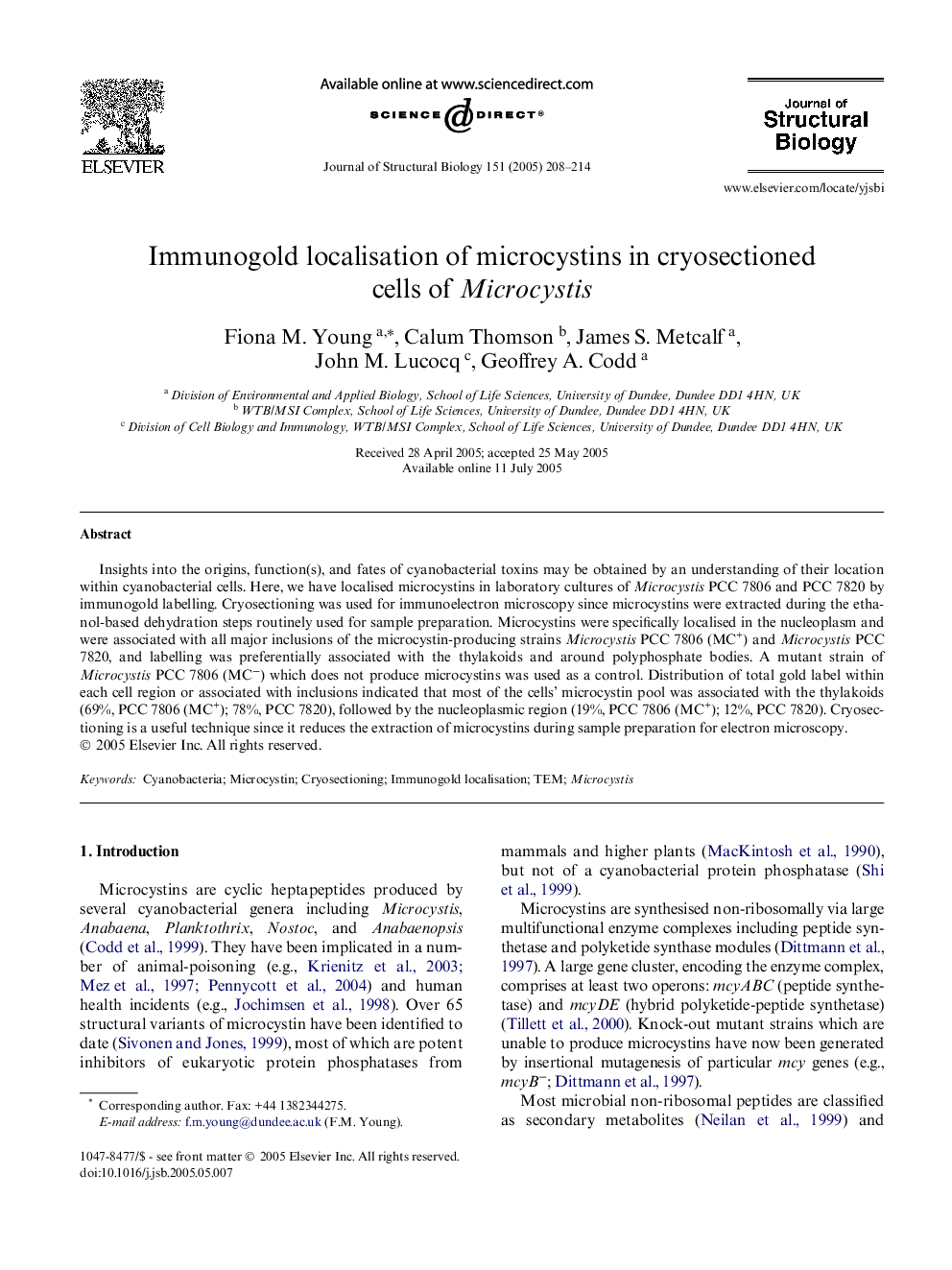| Article ID | Journal | Published Year | Pages | File Type |
|---|---|---|---|---|
| 9138892 | Journal of Structural Biology | 2005 | 7 Pages |
Abstract
Insights into the origins, function(s), and fates of cyanobacterial toxins may be obtained by an understanding of their location within cyanobacterial cells. Here, we have localised microcystins in laboratory cultures of Microcystis PCC 7806 and PCC 7820 by immunogold labelling. Cryosectioning was used for immunoelectron microscopy since microcystins were extracted during the ethanol-based dehydration steps routinely used for sample preparation. Microcystins were specifically localised in the nucleoplasm and were associated with all major inclusions of the microcystin-producing strains Microcystis PCC 7806 (MC+) and Microcystis PCC 7820, and labelling was preferentially associated with the thylakoids and around polyphosphate bodies. A mutant strain of Microcystis PCC 7806 (MCâ) which does not produce microcystins was used as a control. Distribution of total gold label within each cell region or associated with inclusions indicated that most of the cells' microcystin pool was associated with the thylakoids (69%, PCC 7806 (MC+); 78%, PCC 7820), followed by the nucleoplasmic region (19%, PCC 7806 (MC+); 12%, PCC 7820). Cryosectioning is a useful technique since it reduces the extraction of microcystins during sample preparation for electron microscopy.
Related Topics
Life Sciences
Biochemistry, Genetics and Molecular Biology
Molecular Biology
Authors
Fiona M. Young, Calum Thomson, James S. Metcalf, John M. Lucocq, Geoffrey A. Codd,
